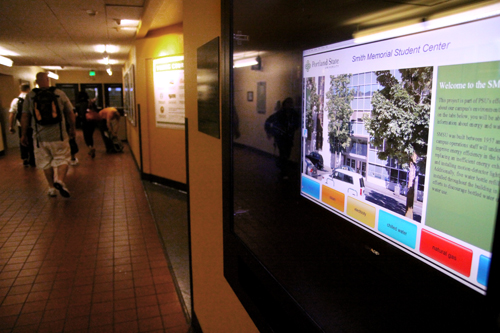You know, cell phones just aren’t prominent enough in our lives. We just don’t spend enough time on them. How can we remedy this terrible error? I know, let’s use them in school.
Cellular education
You know, cell phones just aren’t prominent enough in our lives. We just don’t spend enough time on them. How can we remedy this terrible error? I know, let’s use them in school.
In case you missed my sarcasm, let me put it this way: This is a terrible idea.
In St. Mary’s, Ohio, a school district has developed a program that will assign primary school children PDAs to use as part of the curriculum. The program, which cost roughly $40,000 to implement, began last year when 60 PDAs were handed out to students to use.
Just as the economy is at its worst and schools are struggling to provide for their students, the public is footing that much money so kids can have cell phones at their desks. Seriously?
Ohio is not alone in its quest for technological upkeep. Many states around the nation, and different school ages—from primary all the way up to college—have been considering the use of mobile phones in the classroom.
One of the strongest arguments for educational cell phone use is that students already have phones, and that if the school is not using them to educate their students, then they are behind the times. Kyle Menchhofer, district technology coordinator at the Ohio school, states that, “We need to teach them to be responsible users of cell phones. There’s a right time and a wrong time to use them.”
The school needs to teach children how to be responsible with cell phones? Funny, I thought that was up to parents. And I’m just wondering, if that were true, where were the Nintendos and Segas when I was in school? Those were seen as the enemy of education not so long ago, yet parents were expected to monitor our activities on them and deem what was an appropriate length of time to be spent engaged with video games.
Human beings of all ages spend far too much time plugged into these devices. You cannot walk down the street without seeing someone with a phone in his or her ear or texting away. Even with cell phone bans while driving, one does not go a day without seeing careless drivers chatting away while at the wheel. Students of all ages are constantly in trouble for ringing phones in classrooms or get caught texting when they are supposed to be paying attention.
Meanwhile, children of younger and younger ages are gaining access to cellular service. Technology is a wonderful thing, but not when it interferes with, rather than aids, education.
Why not invest more of that money into better teachers, more computer and textbook access and stronger educational programs? We cannot afford to divvy out student attention any further. Let’s leave the cell phones at home.



